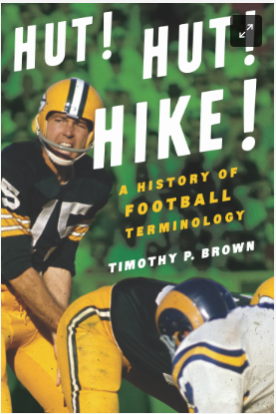Frank Grant early Baseball star
Luis Aparicio the Amazing MLB Shortstop
Born in Maracaibo, Venezuela, Aparicio's baseball journey began early. His natural talent was undeniable, and by 1956, at the tender age of 19, he found himself in the major leagues with the Chicago White Sox. While his batting average was respectable, it was his defensive prowess that truly stole the show. Aparicio possessed a seemingly supernatural ability to anticipate plays, range that covered seemingly impossible ground, and a throwing arm that could rifle the ball across the diamond. Year after year, he dazzled fans with acrobatic catches and bullet throws, earning him the nickname "El Mago" – The Wizard.
Numbers only tell part of Aparicio's story. He holds the record for most career Gold Glove Awards for shortstops (nine), a testament to his defensive brilliance. But his impact went beyond statistics. His speed on the basepaths was a constant threat, terrorizing opposing pitchers and racking up over 500 stolen bases throughout his career. More importantly, Aparicio brought a joy to the game that was contagious. His hustle and energy were infectious, lifting the spirits of teammates and fans alike.
However, Aparicio's career wasn't without challenges. He entered the major leagues during a time when Latino players were still a novelty. He faced racism and prejudice, but Aparicio responded with grace and determination, becoming a role model for future generations of Latino players.
In 1984, Luis Aparicio's place in baseball history was cemented with his induction into the National Baseball Hall of Fame. He was not just a great shortstop, he was a pioneer who helped pave the way for Latino players in the major leagues. Aparicio's legacy extends beyond the diamond; he is an icon in Venezuela, a symbol of national pride and a testament to the transformative power of baseball.
Life and career bio of Luis Aparicio. Born April 29, 1934, in Maracaibo, Venezuela, was Baseball hall of fame Shortstop Luis Aparicio.
He played in the MLB from 1956 to 1973 for three American League (AL) teams, most prominently the Chicago White Sox, but the Baltimore Orioles (1963-67) and Boston Red Sox (1971-73) as well. Aparicio's play in the field is what made him stand out among his peers as he won nine Gold Glove Awards, setting a league record since matched only by Omar Vizquel. Luis is one of the top MLB players to wear the Number 11 Jersey. MLB Number 11 Jersey.
The Baseball Journey of Monte Irvin
Born in 1919, Irvin's talent blossomed early. He excelled in four sports in high school and became a star in the Negro Leagues with the Newark Eagles. His well-rounded skillset included power-hitting, solid fielding at shortstop, and impressive base-stealing ability. He even played professionally in Mexico and Cuba, further enhancing his reputation as one of the best players of his generation.
However, the color barrier in baseball prevented Irvin from showcasing his talents on the biggest stage until 1949, when he joined the New York Giants at 30. Irvin quickly established himself as a force despite the delayed entry, hitting a .293 batting average with 24 home runs in his first entire season (1951). He finished third in the National League MVP voting, showcasing his ability to compete with the best even after years away from the major leagues.
Irvin's impact transcended statistics. He became a mentor and role model for younger players like Willie Mays, who joined the Giants in 1951. His calm demeanor and leadership helped pave the way for future generations of Black players in baseball.
While injuries and lost prime years undoubtedly impacted his ultimate statistics, Irvin's career speaks volumes about perseverance and overcoming adversity. He retired in 1956, leaving behind a legacy of excellence, both on and off the field. He was inducted into the Baseball Hall of Fame in 1973, a testament to his undeniable talent and the lasting impact he had on the sport.
Monte Irvin's story reminds us of the human cost of discrimination and the importance of recognizing the contributions of athletes who were denied the opportunity to reach their full potential on a level playing field. His talent, leadership, and resilience inspire generations of players and fans alike.
Börje Salming Hockey Career of Two Continents
Born in Salangen, Sweden, in 1946, Salming's path to the NHL was unconventional. Drafted by the Toronto Maple Leafs in 1970, he arrived in a league dominated by North American players. Standing at an imposing 6'3" and weighing over 220 pounds, Salming brought a blend of size, skill, and defensive tenacity that the NHL hadn't seen before. He quickly earned the respect of his peers and the adoration of the Toronto faithful, becoming a fan favorite for his physical play and offensive contributions.
Salming's early years were marked by his resilience. He endured racial slurs and physical challenges from opponents unaccustomed to his style. However, he persevered, using his grit and determination to carve out a space for himself in the league. His success inspired a generation of Swedish players, including Mats Sundin and Peter Forsberg, who followed in his footsteps.
Beyond his influence on European hockey, Salming's on-ice contributions were undeniable. He formed a formidable defensive pairing with fellow Swede, Lars-Erik Johansson, solidifying the Maple Leafs' defensive core for over a decade. Offensively, Salming possessed a booming slap shot and a knack for joining the rush, amassing over 700 points in his 17-year NHL career.
Salming's impact extended beyond statistics. He was a leader on and off the ice, a fierce competitor who demanded the best from himself and his teammates. He was also a respected ambassador for the game, helping to bridge the gap between North American and European hockey cultures.
Following his retirement in 1999, Salming's legacy continued to grow. He was inducted into the Hockey Hall of Fame in 1996, a testament to his groundbreaking career. He remained a beloved figure in Toronto, a constant presence at Maple Leafs games, and a source of inspiration for aspiring hockey players everywhere.
The life and career of Borje Salming. Born April 17, 1951, in Kiruna, Sweden, was Hockey Hall of Fame defenseman Borje Salming. Born April 17, 1951, in Kiruna, Sweden, was Hockey Hall of Fame defenseman Borje Salming. played professionally for 23 seasons, for the clubs Brynäs IF, Toronto Maple Leafs, Detroit Red Wings, and AIK. He spent 16 seasons with the Maple Leafs, who retired his number 21 in 2016. Salming holds several Maple Leafs records, including the most assists. Salming was one of the first European players to make an impact in the NHL, for which he is often considered a trailblazer, being named to six consecutive NHL All-Star Teams, winning the NHL All-Star Games of 1976, 1977 and 1978. In 1996, his first year of eligibility, Salming became the first European player inducted into the Hockey Hall of Fame.
Bert Olmstead Hockey Legend
Early Days and NHL Debut
Born in 1926, Olmstead began his professional career in the Chicago Blackhawks organization in 1949. However, his path to stardom wasn't linear. He was traded twice within a short period and eventually landed with the Montreal Canadiens in 1950.
A Montreal Marvel
It was in Montreal where Olmstead truly blossomed. Playing alongside legendary figures like Jean Beliveau and Bernie Geoffrion, he formed a potent offensive line. Olmstead's speed, playmaking ability, and scoring touch were on full display. He led the league in assists twice and became a key contributor to the Canadiens' dynasty, winning four Stanley Cups between 1953 and 1958.
Statistical Prowess
Throughout his 14-year NHL career, Olmstead amassed impressive statistics. He scored 181 goals and notched a remarkable 421 assists for 602 points. His playmaking prowess was undeniable, as evidenced by his league-leading assist totals.
Eleven Stanley Cup Finals Olmstead's career was defined by his presence on the biggest stage. He appeared in the Stanley Cup Finals an astonishing eleven times, winning five championships (four with Montreal and one with the Toronto Maple Leafs in 1962, his final season). This unwavering pursuit of the ultimate prize solidified his reputation as a winner.
Coaching Endeavors
Following his retirement as a player, Olmstead attempted a coaching career. While his stints with the Vancouver Canucks and Oakland Seals were short-lived, he continued to be involved in the game he loved.
A Hall of Fame Legacy
In 1985, Olmstead's contributions to hockey were recognized with his induction into the Hockey Hall of Fame. He is remembered as a tenacious competitor, skilled offensive player, and vital to championship teams.
Born September 4, 1926, in Sceptre, Saskatchewan, was Hockey Hall of Fame Left Wing, Bert Olmstead. This legend was part of the Stanley Cup Champion Montreal Canadiens 1953, 56, 57, 58; Toronto Maple Leafs 1962. Olmstead began his career with the Black Hawks in 1949. In December 1950, he was traded to the Montreal Canadiens via Detroit.
Olmstead was a physical player who was known for his hard-nosed style of play. He was also a skilled scorer. Bert played in 11 Stanley Cup Finals in his 14-year NHL career, winning five times. He retired with 181 goals and 421 assists for 602 points in 848 games. He was inducted into the Hockey Hall of Fame in 1985.
Guy Lapointe Hockey Legend
Lapointe's journey began with the Montreal Junior Canadiens, where his talent caught the eye of the NHL team. Drafted in 1968, he quickly established himself as a reliable presence on the Canadiens' blueline.
A Key Piece of the Canadiens' Dynasty (1970-1979):
Lapointe's arrival coincided with the rise of the "Big Three" – himself alongside Larry Robinson and Serge Savard. This formidable defensive unit became the backbone of the Canadiens' dominance throughout the decade.
Lapointe's contributions went beyond shutting down opponents. His offensive prowess was a valuable asset. He possessed a knack for joining the rush and creating scoring opportunities, amassing over 450 assists throughout his career.
Six Stanley Cup Victories and Individual Accolades:
Lapointe's impact was undeniable. He played a pivotal role in all six of the Canadiens' Stanley Cup victories from 1971 to 1979. His consistency and leadership earned him the respect of teammates and opponents alike.
Beyond team success, Lapointe received individual recognition. He earned a Second All-Star Team selection three times and a First All-Star Team nod in 1973. He also represented Canada at the 1977 Canada Cup, capturing the championship gold medal.
Later Career and Legacy:
After leaving the Canadiens in 1982, Lapointe played briefly for the St. Louis Blues and Boston Bruins before retiring in 1984. Injuries hampered his later seasons, but his legacy remained secure.
In 1993, Lapointe's well-deserved induction into the Hockey Hall of Fame solidified his place among the game's greatest defensemen. His influence transcended statistics; he epitomized the winning mentality that defined the Montreal Canadiens of the 1970s.
Beyond the Ice:
Lapointe's passion for hockey extended beyond his playing career. He remained involved in the sport, serving as a scout for various teams, including his former team, the Montreal Canadiens.
Guy Lapointe Stats and News from NHL.com. Guy Lapointe was a four-time All-Star and player on six Stanley Cup Champion teams, Lapointe was a winner. He spent the majority of his career on the Montreal Canadiens but also played on the St Louis Blues and the Boston Bruins. Guy scored 171 NHL career Goals, with a total of 622 points. He was inducted into the Hockey Hall of Fame in 1993.
Scott Niedermayer A Two-Team Legend and Hockey Icon
Early Career and Rising Star (1991-2003):
-Drafted third overall by the New Jersey Devils in 1991, Niedermayer quickly adapted to the NHL. His smooth skating, offensive instincts, and two-way play made him a valuable asset.
-Partnered with fellow defenseman Scott Stevens, Niedermayer formed a formidable defensive unit that anchored the Devils' success during their championship runs.
-He played a crucial role in the Devils' Stanley Cup victories in 1995, 2000, and 2003, showcasing his ability to elevate his game on the biggest stage.
A Change of Scenery and Continued Dominance (2003-2009):
-In 2003, Niedermayer signed with the Anaheim Ducks, seeking a new challenge. He instantly transformed the Ducks' defensive corps and became a key leader.
-Alongside Chris Pronger, Niedermayer formed another dominant defensive partnership, leading the Ducks to their first-ever Stanley Cup championship in 2007. He won the Conn Smythe Trophy as playoff MVP, solidifying his legacy as a clutch performer.
A Leader on and Off the Ice (2009-2010):
-Following a brief retirement, Niedermayer returned to the Ducks in 2009, this time as team captain. His veteran leadership and on-ice skills proved invaluable during their Stanley Cup run in 2010.
-At the age of 40, Niedermayer hoisted the Stanley Cup for the fourth time in his career, becoming one of the few players to achieve this feat with two different teams.
Born August 31, 1973, in Edmonton, Alberta, Canada, was Hockey Hall of Fame Defensemen, Scott Niedermayer. This legend played 18 seasons he was a four-time All-Star and was on four Stanley Cup Champion teams. In 2003–04 Scott won the James Norris Memorial Trophy as the NHL's top defenseman and the Conn Smythe Trophy in 2007 as the most valuable player of the playoffs. Niedermayer skated for the New Jersey Devils, and the Mighty Ducks of Anaheim.
Baseball Career Bio on Billy Southworth
He played for 17 seasons in the big leagues, primarily with the Phillies and St. Louis Browns. Southworth was a versatile player who could play both first base and the outfield, and he was known for his solid hitting and good baserunning skills. He was a two-time All-Star and finished his career with a batting average of .277 and 1,759 hits.
After retiring as a player in 1931, Southworth went on to manage in the major leagues for 24 seasons. He managed for five different teams, most notably the St. Louis Browns and Boston Braves. Southworth led the Browns to their only American League pennant in 1944, and he also managed the Braves to two National League pennants in 1948 and 1949.
Southworth was a tough and demanding manager, but he was also respected by his players. He was known for his ability to get the most out of his teams, and he is considered one of the best managers in baseball history. Southworth was inducted into the Baseball Hall of Fame in 1982.
The legend of baseball managers also had a brilliant playing career in the MLB. He was a member of the 1926 World Series team.
Mordecai Brown - Three Fingers Brown
Born in 1876, Brown's path to baseball stardom wasn't conventional. His early career was a journeyman's odyssey, bouncing between minor league teams before landing with the St. Louis Cardinals in 1903. Despite his unorthodox grip due to the missing fingers, Brown showcased exceptional control and a devastating curveball. However, his debut season was a struggle, and he was traded to the Chicago Cubs after just one year.
It was in Chicago that Brown's career truly flourished. Under the tutelage of legendary manager Frank Chance, Brown thrived in a pitching-centric era. His pinpoint accuracy and ability to induce groundouts made him a perfect fit for the Deadball Era, where low scoring games were the norm. Between 1904 and 1912, Brown became the anchor of the Cubs' pitching staff, leading the team to two World Series victories in 1907 and 1908. He consistently racked up wins, averaging over 22 victories a season during this dominant eight-year stretch.
Born October 19, 1876, in Nyesville, Indiana, was Baseball Hall of Fame Pitcher Mordecai "Three Finger" Brown. This legend was a World Series Champion with the Chicago Cubs in 1907, 08. He led the National League in wins in 1909 and the entire MLB in ERA in 1906.
Rob Blake - Hockey HOF Defenseman
A Pillar of Defense in Los Angeles (1988-2001):
Blake quickly established himself as a force to be reckoned with upon entering the NHL. His imposing 6'6" frame, combined with his skating ability and exceptional hockey IQ, made him a dominant presence on the Kings' blueline. He garnered numerous accolades throughout his tenure in Los Angeles, winning the James Norris Memorial Trophy as the NHL's best defenseman in 1998 and captaining the team for five seasons. However, despite consistent individual success, the Stanley Cup remained elusive for Blake and the Kings.
A Controversial Departure and a New Beginning (2001-2004):
In 2001, a trade sent a shockwave through the NHL – Rob Blake was leaving Los Angeles for the Colorado Avalanche. This decision, viewed as a betrayal by some Kings fans, was a calculated move by Blake in pursuit of the ultimate prize. The Avalanche boasted a championship-caliber roster, and Blake, recognizing the opportunity, embraced his new role.
Leadership and Redemption: Hoisting the Stanley Cup (2001-2004):
In Colorado, Blake seamlessly integrated into the team's defensive scheme. His leadership and experience proved invaluable, particularly during the playoffs. The Avalanche culminated their dominant season by capturing the Stanley Cup in 2001, finally fulfilling Blake's lifelong dream. He had gone from a Stanley Cup finalist to a champion, proving his dedication and leadership on a championship-caliber team.
A Legacy Beyond the Cup (2004-2010):
Following his triumph with the Avalanche, Blake continued his career with the Toronto Maple Leafs and the San Jose Sharks, serving as captain for both teams. While he never reached the Stanley Cup Finals again as a player, his leadership and on-ice presence remained valuable assets. He retired in 2010 after a remarkable 20-year career, etching his name in hockey history.
More Than Just a Norris Trophy Winner:
Rob Blake's legacy extends beyond his individual accolades and Stanley Cup victory. He was a complete defenseman, excelling in both offensive and defensive situations. More importantly, he displayed exceptional leadership qualities, captaining multiple teams and earning the respect of teammates and coaches alike.
A Full-Circle Return and Continued Success (2014-Present):
In 2014, Blake returned to the Los Angeles Kings organization as their general manager. Under his leadership, the Kings captured their second Stanley Cup in franchise history in 2014. This victory marked a remarkable full-circle moment for Blake, solidifying his place in Kings' lore not only as a player but also as a key architect of their championship success.
Born December 10, 1969, in Simcoe, Ontario, was Hockey Hall of Fame Defenseman Rob Blake. Blake carved a remarkable path through the NHL, leaving a legacy of leadership, defensive prowess, and offensive skill. He was drafted by the Los Angeles Kings in 1988 and captained the team for five seasons and helped them reach the 1993 Stanley Cup Finals. His offensive talents shone in Colorado, where he secured a Stanley Cup victory in 2001 and was awarded the Norris Trophy as the league's top defenseman. Continuing his journey with the San Jose Sharks, Blake retired as their captain, cementing his place as a true legend with 240 goals, 537 assists, and induction into the Hockey Hall of Fame.



.jpg?https://jerseydispatch.com/pfeL/p/c312642c0431e75b485e432232c99c1c/website/Daily-Sports-Uniform-Number-History/February/February-8-Jersey-Numbers/Images/.Basketball_at_Pas-en-Artois,_France,_1918_(20166469838).jpg)
.jpg?https://jerseydispatch.com/pfeL/p/c312642c0431e75b485e432232c99c1c/website/Sports-History-Photo-of-the-Day/February-Images/February-8-Image/images/.640px-Arctic_Sisterhood_Basketball_banner,_Nome_(NOWELL_200).jpg)





